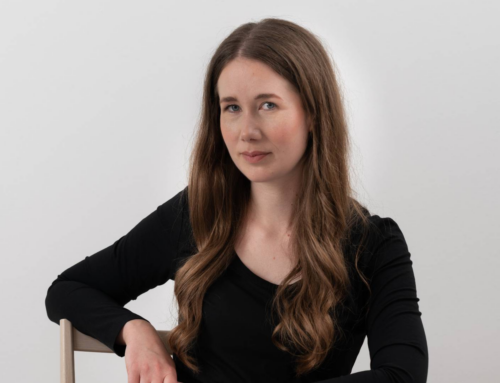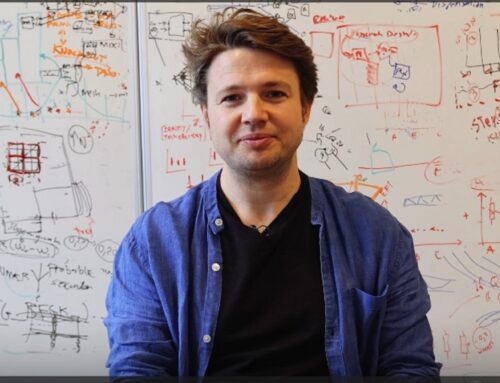
Our autopilot can obstruct inclusion
If we are to create more room for diversity, for example on the labour market, then we need to work on our own biases. The decision to hire someone is all too often influenced unconsciously by automatic preferences and assumptions about candidates – biases that are typically rooted in the normative stereotypes that roam in organisations and society.
by Nanna Stærmose. The article is published on 16/06/2023.
The fact that women are often under-represented in management positions can, in part, be due to the workings of unconscious bias.
We are stuck in the idea that men are better at leadership and women are better at being led. However, this is not an idea with any basis in reality, so why do our brains hold on to such gendered stereotypes?
“The human brain has to process so much input that it sometimes takes the easier way out, the one that doesn’t ask quite as much of our brain. An example is the stronger association of assertiveness with men compared to women. If we also associate leadership with being assertive it’s easier for the brain to conclude that men are better at leadership than women,” says Jannick Friis Christensen, Postdoc at the Copenhagen Business School Department of Business Humanities and Law.
Jannick Friis Christensen’s research is centered on how biases can affect employee diversity, inclusion, and equitable outcomes in organisations, for example in a recruitment process. We cannot avoid biases, they are the price we pay for having a brain, according to Jannick Friis Christensen. However, he does find that we can and should work to mitigate the effects of bias if wanting to prevent discrimination and create equal opportunities for underrepresented groups of people.
“To a certain degree, our biases influence behaviour and actions. This means that we risk making decisions with little nuance and on an improper basis,” he says.
Thoughts shape processes
An example could be a job interview during which you sit across from a woman who wears a hijab that triggers a certain bias that may affect the course of the conversation.
“You may form the hypothesis that a veiled Muslim woman has a more traditional way of life and will have many children, and in an effort to confirm this hypothesis, the focus of the interview is this rather than her competences in relation to the job. This will create a distortion as other candidates would not face the same bias,” says Jannick Friis Christensen.
Even though the researcher says it is impossible to eliminate bias completely, he does suggest that we can work on reducing the impact of bias. As a lecturer in human resource management at Copenhagen Business School, Jannick Friis Christensen has noticed that the younger generation is aware of bias and other issues related to diversity, equity, and inclusion. This is positive, but not enough.
“To address unconscious bias effectively, we have to approach it as we would a bad habit. It’s not enough to merely be aware of its existence. People don’t usually stop smoking because they become aware that cigarettes are dangerous to their health and we won’t see more women on executive boards just because we’re aware that most seats are taken up by men,” he says.
Jannick Friis Christensen believes that to effectuate change, we have to work with bias strategically and view it structurally as an organisational issue rather than as the responsibility of individuals.
“The responsibility lies first and foremost with companies, not individuals and especially not individuals that belong to minority groups. Change must be enacted at an organisational level,” says Jannick Friis Christensen, and he continues:
“If the leadership-ideal within the context of a given company is male-connotated, then it doesn’t make sense to look at the derived bias as held individually. The gender bias is embedded in the way the organisation and its members understand leadership. Consequently, womens’ leadership potential might be left unacknowledged while that of men, generally speaking, may be overestimated.”
In the long term, it’s about making structural changes that challenge the biases in daily practices, which require changing the processes and routines that sustain these biases as habitual behaviour. This also applies when recruiting people with disabilities or with minority ethnic backgrounds.
“It’s not about eliminating bias: that’s impossible. It’s about reducing the risk of discrimination in the labour market. Everyone should have equal opportunities and equal access to jobs. Nobody should be ruled out in advance because of recruitment procedures that don’t take into account unconscious bias,” says Jannick Friis Christensen.
Facts
Jannick’s particular focus area is LGBT+ (lesbian, gay, bisexual and transgender) perspectives in work-related contexts, but he has also researched transgressive behaviour at Denmark’s Roskilde Festival.
As part of his current research project, which is financed by The Independent Research Fund Denmark, Jannick is studying corporate engagement and collaboration with Pride via partnerships and sponsorships. The study focuses on organisational learning, pinkwashing and rainbow capitalism.
Take the test yourself
Researchers at Harvard University have developed The Implicit Association Test (IAT).
The test can indicate your degree of bias.
Click the link to take the test: https://implicit.harvard.edu/implicit/takeatest.html
Jannick Friis Christensen
Postdoc at Copenhagen Business School (CBS) where he teaches and researches diversity management and inclusion in organisations.
Member of the Bevica Foundation’s research network
Read more research profiles




